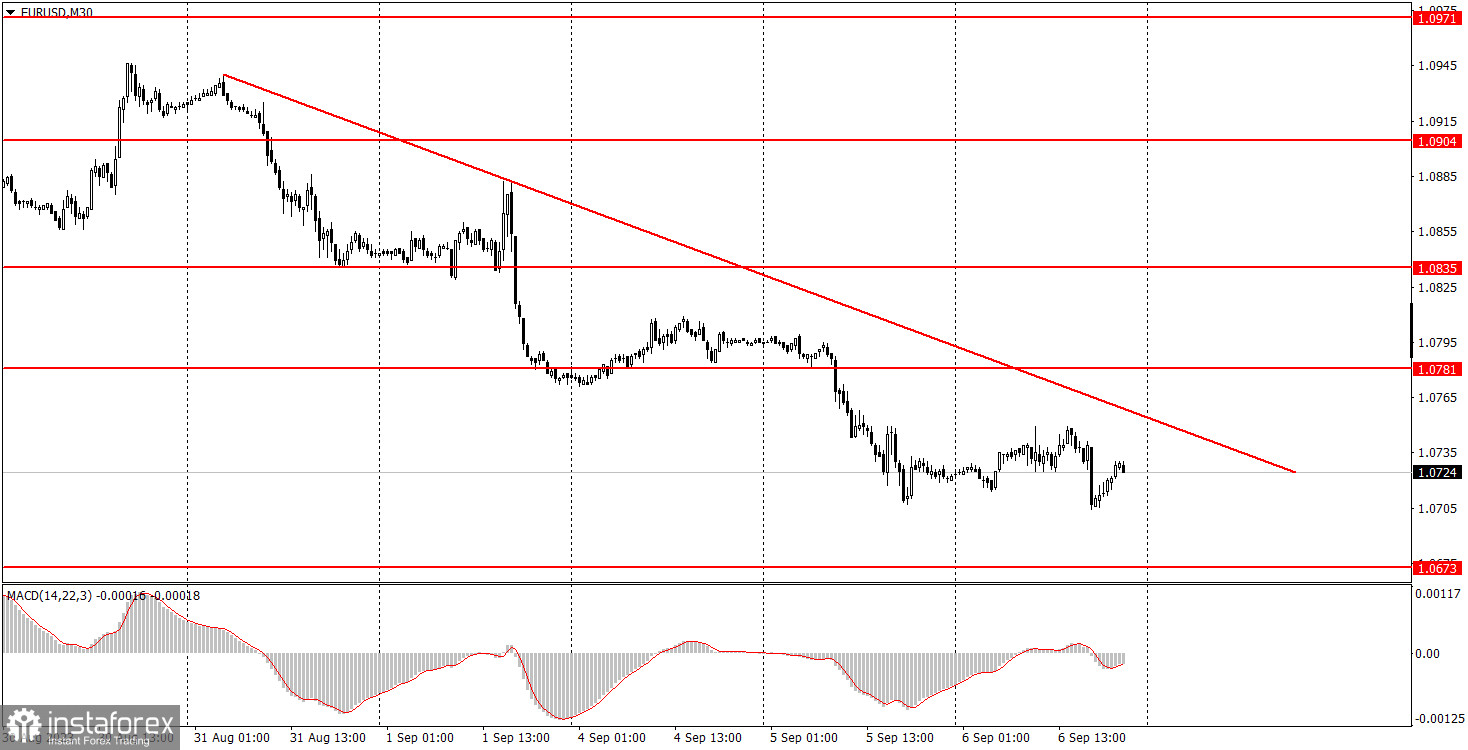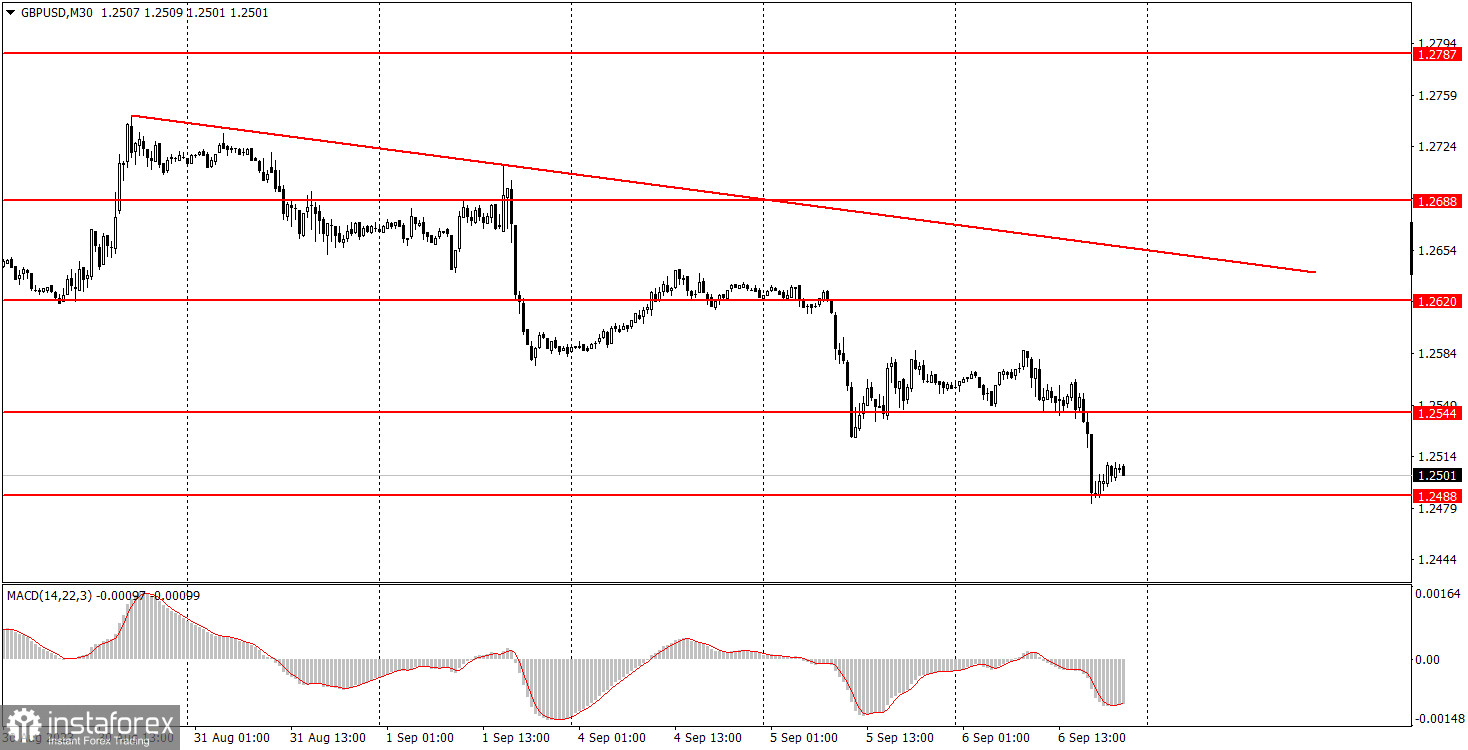Analysis of macroeconomic reports:

There will be very few macroeconomic events on Thursday. In the early morning, Germany had already released its industrial production report, which, as expected, turned out to be below forecasts. However, both the euro and the British pound have already started the day with declines, and it's unlikely that it's solely due to weak industrial production in Germany. As we've mentioned several times before, both pairs are currently leaning towards a downward trend, so they may continue to move downward regardless of fundamentals and macroeconomics.
A bit later in the European Union, the third estimate of second-quarter GDP will be published. It's expected to show a growth rate of 0.3% quarterly. If the actual value falls below this, it could exert additional pressure on the European currency. The afternoon will bring the standard weekly report on US unemployment claims. Here too, everything will depend on deviations from the forecast. Deviations in the range of 5–10 thousand claims are not considered significant.
Analysis of fundamental events:
Among the fundamental events on Thursday, we can highlight speeches by members of the Federal Reserve's monetary committee, Patrick Harker, Raphael Bostic, and Michelle Bowman. All except Harker will speak at night, so their statements may affect the positions of the US currency only tomorrow. In any case, we do not expect any resonant rhetoric from the Federal Reserve representatives. Everything will depend on the US inflation rate for August, which will be known next week.
General conclusions:
On Thursday, novice traders can focus their attention on the GDP report in the European Union, while all other events appear secondary. Both currency pairs have already begun to decline on Thursday, creating the impression that they don't need reports and events to continue following the current trend.
Key trading system rules:
- The strength of the signal is determined by the time it takes to form the signal (rebound or level breakthrough). The shorter the time required, the stronger the signal.
- If there were two or more false signal trades near a certain level, all subsequent signals from that level should be ignored.
- In a flat market, any pair can generate a lot of false signals or none at all. But in any case, at the first signs of a flat market, it's better to stop trading.
- Trading positions are opened during the period between the start of the European session and midway through the American session, when all trades must be manually closed.
- On the 30-minute timeframe, trading based on MACD indicator signals should only be done in the presence of good volatility and a confirmed trend supported by a trendline or trend channel.
- If two levels are located too close to each other (within 5 to 15 pips), they should be considered a support or resistance area.
What's on the charts:
Support and resistance levels are targets for opening buy or sell positions. Take Profit levels can be placed near them.
Red lines are channels or trendlines that reflect the current trend and indicate the preferred direction for trading.
MACD indicator (14, 22, 3) - histogram and signal line - is an auxiliary indicator that can also be used as a signal source.
Important speeches and reports (always found in the news calendar) can have a significant impact on the movement of currency pairs. Therefore, during their release, it is advisable to trade with extreme caution or exit the market to avoid sharp price reversals against the previous trend.
Beginner forex traders should remember that not every trade can be profitable. Developing a clear strategy and practicing proper money management are the keys to success in trading over the long term.






















